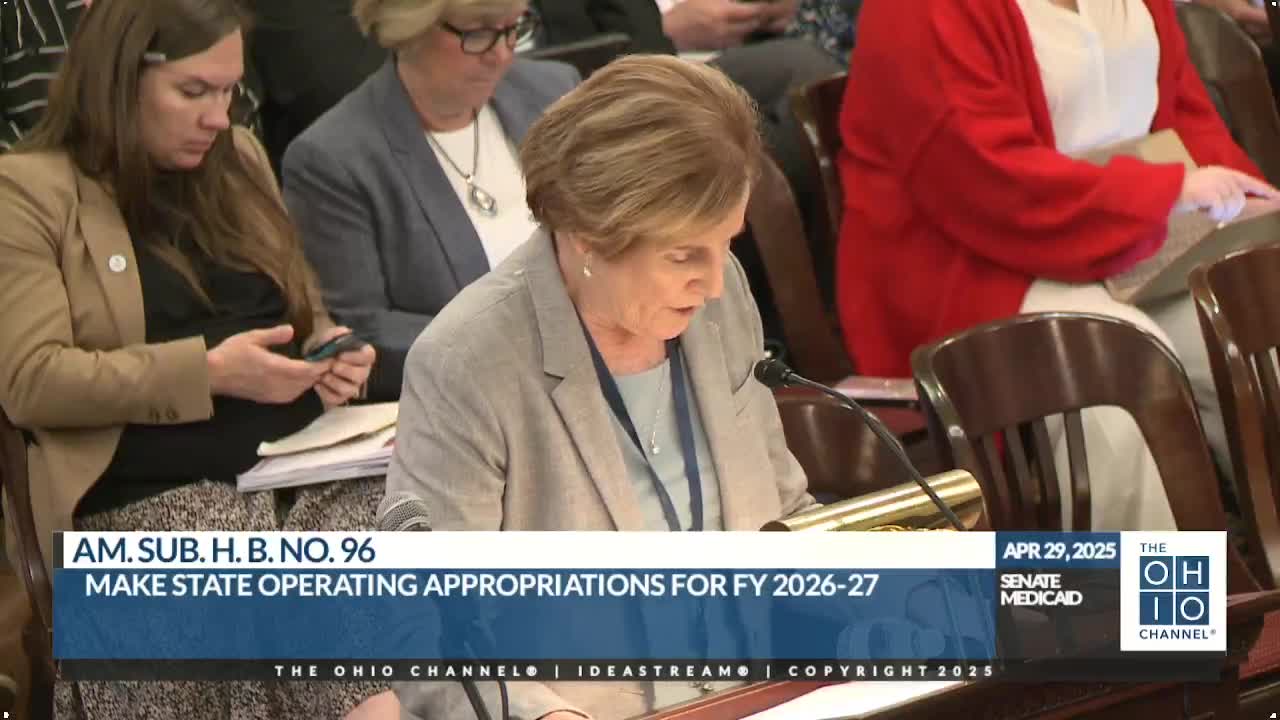Ohio health officials discuss rising Medicaid costs amid aging population trends
April 29, 2025 | Medicaid, Senate, Committees, Legislative, Ohio
This article was created by AI summarizing key points discussed. AI makes mistakes, so for full details and context, please refer to the video of the full meeting. Please report any errors so we can fix them. Report an error »

The Ohio Senate Medicaid Committee meeting on April 29, 2025, highlighted pressing concerns regarding the state's Medicaid program, particularly the rising costs driven by an aging population and increasing healthcare needs.
A key focus of the discussion was the significant impact of demographic changes on Medicaid caseloads and expenses. The committee noted that the number of elderly Ohioans is growing at a rate that outpaces other demographic groups, leading to a disproportionate increase in costs associated with care for older, disabled, and dually eligible individuals. This group accounts for approximately 40% of the total growth in per member costs for 2026 and over 30% for 2027, underscoring the urgent need for strategic planning in Medicaid funding.
Prescription drug costs were another major topic, with the committee discussing the escalating prices of treatments, particularly for biosimilars and obesity medications. The rising costs of these drugs are expected to contribute significantly to overall Medicaid expenditures, with projections indicating that drug costs will account for 12.2% of the per member monthly increase by 2027.
Additionally, the meeting addressed the issue of morbidity within the Medicaid population. As healthier individuals exit the program, the remaining enrollees tend to have more complex health needs, resulting in higher costs per person. The committee emphasized the prevalence of chronic conditions such as diabetes and heart disease, as well as the critical need for behavioral health services. Notably, over 40% of Medicaid enrollees received behavioral health treatment last year, with some regions experiencing even higher concentrations of individuals requiring such care.
The discussions from this meeting reflect a growing concern for the sustainability of Ohio's Medicaid program as it grapples with demographic shifts and rising healthcare costs. The committee's findings will likely inform future budget decisions and policy initiatives aimed at addressing these challenges and ensuring that vulnerable populations continue to receive necessary support.
A key focus of the discussion was the significant impact of demographic changes on Medicaid caseloads and expenses. The committee noted that the number of elderly Ohioans is growing at a rate that outpaces other demographic groups, leading to a disproportionate increase in costs associated with care for older, disabled, and dually eligible individuals. This group accounts for approximately 40% of the total growth in per member costs for 2026 and over 30% for 2027, underscoring the urgent need for strategic planning in Medicaid funding.
Prescription drug costs were another major topic, with the committee discussing the escalating prices of treatments, particularly for biosimilars and obesity medications. The rising costs of these drugs are expected to contribute significantly to overall Medicaid expenditures, with projections indicating that drug costs will account for 12.2% of the per member monthly increase by 2027.
Additionally, the meeting addressed the issue of morbidity within the Medicaid population. As healthier individuals exit the program, the remaining enrollees tend to have more complex health needs, resulting in higher costs per person. The committee emphasized the prevalence of chronic conditions such as diabetes and heart disease, as well as the critical need for behavioral health services. Notably, over 40% of Medicaid enrollees received behavioral health treatment last year, with some regions experiencing even higher concentrations of individuals requiring such care.
The discussions from this meeting reflect a growing concern for the sustainability of Ohio's Medicaid program as it grapples with demographic shifts and rising healthcare costs. The committee's findings will likely inform future budget decisions and policy initiatives aimed at addressing these challenges and ensuring that vulnerable populations continue to receive necessary support.
View full meeting
This article is based on a recent meeting—watch the full video and explore the complete transcript for deeper insights into the discussion.
View full meeting
